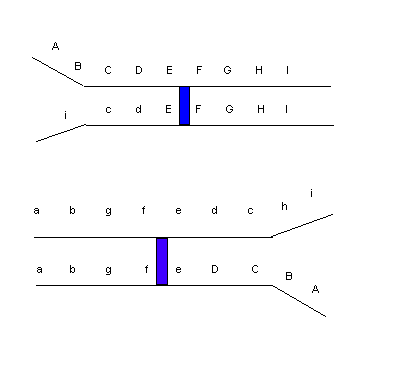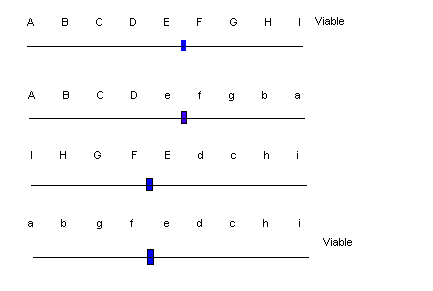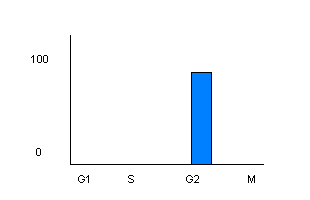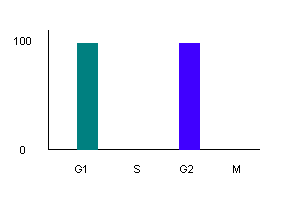
Answers to Problem Set 3 |
1.
Strain 1 inducible (lacZ and lacY are complimented by the reciprocal copies)Strain 2 defective (lacIs super-repressor works in trans, it represses both chromosome and plasmid copies)
Strain 3 inducible (lacZ from the chromosome is inducible, lacY from the plasmid is constitutive, overall lactose utilization phenotype for the cell is then inducible)
Strain 4 inducible (the constitutive operator can only act in cis, lacZ and lacY are only produced from the plasmid where they must be induced)
Strain 5 constitutive (oc, the constitutive operator on the plasmid, is dominant to chromosomal lacIs)
2A: see handout
2B
Meiosis 1
2C
Meiosis 2
3.
A. No dauer If daf-16 cannot activate dauer formation then dauer will not form.
B. No dauer If the pheromone cant bind daf-12, daf-12 wont release daf-16 so dauer formation cannot be activated.
C. Dauer If daf-12 activates instead of repressing, dauer will always be formed.
D. Dauer No daf-12 means no repression of daf-16 so dauer will always form.
E. Dauer daf-16 cannot be repressed so dauer will always form.
4.
A. Using more than one strain of bacteria allows you to test for spectra of mutations. Different mutagens will revert different types of mutations.
B. NaCl not mutagenic
EMS mutagenic, reverts base substitution mutations
Proflavin mutagenic, reverts frame shift mutations
Hudson River H2O mutagenic, reverts both base changes and frame shifts
5A
cdc16 mutation prevents the cells from entering M phase therefore all cells in G2 will arrest in G2 at the boundary to M phase.

5B
With both cdc7 and cdc16 mutations, cells will arrest at 2 different point in the cell cycle. All cells in G1 will arrest at the G1 to S phase boundary and all cells in G2 will arrest at the G2 to M phase boundary.

6.
A. Maternal inheritance with incomplete penetrance and paternal imprinting are both consistent with this pedigree. Maternal effect is not consistent because all offspring of I-2 and II-2 do not have the same phenotype.
B. Yes. All telepathic individuals have only methylated TELP-1, the allele passed from their mother is deleted. Unaffected individuals have both a methylated and an unmethylated copy of TELP-1. Carriers have only the unmethylated copy since their deleted copy was passed from their father and would normally be methylated.
C. Based on the methylation pattern, III-5 is a carrier of the TELP-1 deletion, therefore there is a ½ chance she will pass on the deletion and a ½ chance she will pass the normal copy to her children. The father has no family history of telepathy so carries 2 normal alleles, however, his copy of TELP-1 will be inactivated in all of their children. Therefore, there is a 50% chance that their child will be telepathic.